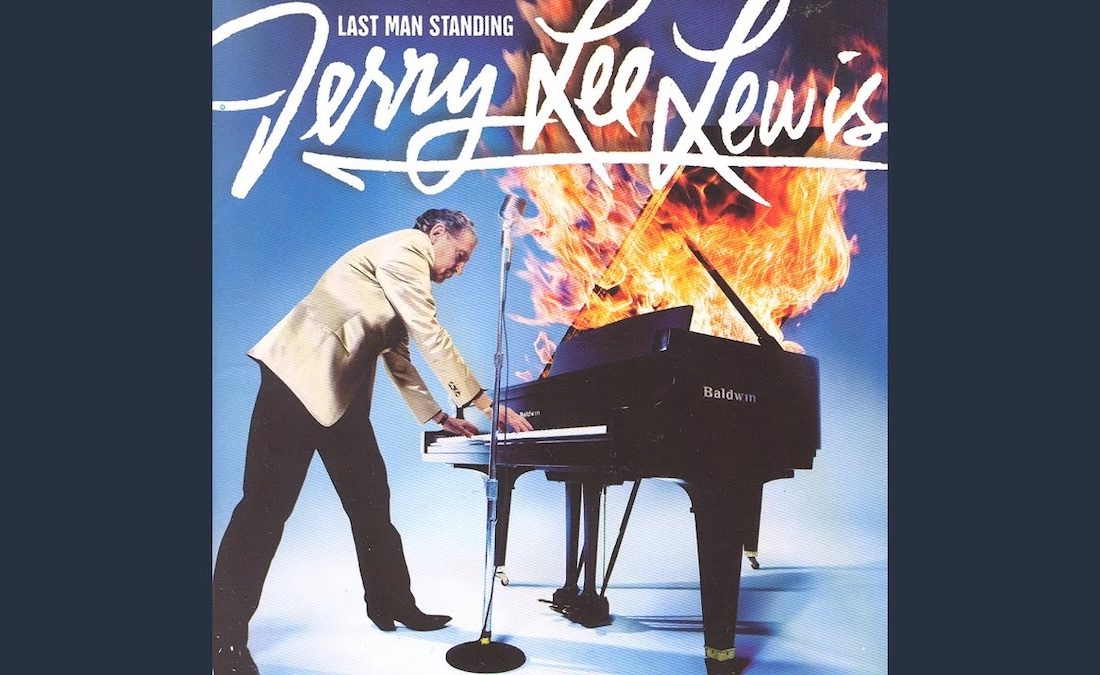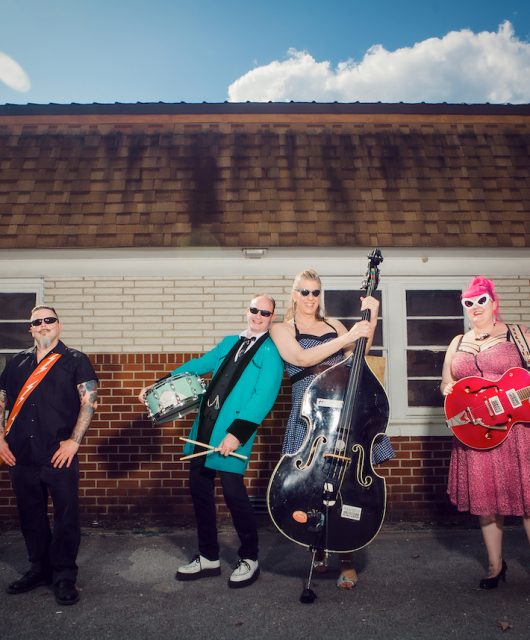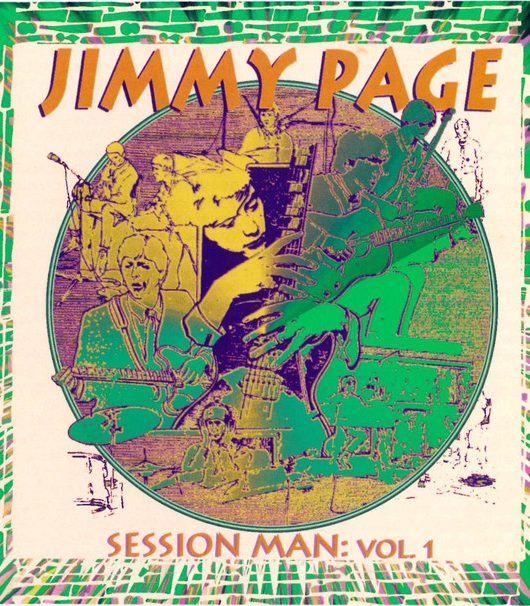When multimillionaire playboy Steve Bing, a massive Jerry Lee Lewis fan, sought to finance a record with The Killer, he began an epic odyssey that resulted in the astonishing comeback Last Man Standing. Producer Jimmy Rip reveals all… Words by Jordan Bassett
A record producer and a millionaire walk into a bar. The producer is Jimmy Rip, a fast-talking New York native who’s worked with the likes of Debbie Harry and Mick Jagger. The millionaire is Steve Bing, who inherited an estimated $600 million from his property developer grandfather at the age of 18.
Having moved to L.A., Rip was spending many of his nights “hanging out in bars, which is my favourite pastime,” he tells Vintage Rock. It was here that he met first Bing, a fellow music obsessive with whom he shared an instant kinship.
Talk soon turned to Jerry Lee Lewis, of whom both were enormous fans. “The two of us would be driving around in Steve’s car,” recalls Rip. “The whole time he was saying, ‘You should work with Jerry Lee! What do you think we can do to find him?”
Missing In Action
At the time, Lewis was in the wilderness. The Killer hadn’t released a record in many years – not since 1995’s Young Blood, which was hailed as a minor return to form. And then… nothing. As biographer Rick Bragg noted in the book Jerry Lee Lewis: His Own Story, the rock’n’roll icon, then in his sixties, was in disastrous health after many decades of substance abuse, which now threatened his life. “He was playing two or three shows a year,” says Rip. “He was playing casinos near his home in Mississippi and he had no website and no [record] management.”
Bing’s excitement about a potential new project was contagious, though Rip had misgivings about searching for The Killer: “The stories and the difficult reputation that he had… I’ve worked with gigantic superstar people, but the idea of Jerry Lee was genuinely scary. I knew a lot of people that had played with him and had stories about guns on the piano and all that stuff. I’m like, ‘Yeah, Steve – let’s do something with Jerry Lee!’ In the back of my mind, I’m like: ‘Oh my God…’”
Global Project
Thus began an epic four-year odyssey that would involve seemingly endless trips around the world; a host of gigantic superstars that made even Rip’s brain boggle; a mind-melting amount of money and, perhaps most astonishingly of all, a rare apology from Jerry Lee Lewis. The result is the 2006 modern rock’n’roll/country classic Last Man Standing, The Killer’s 39th studio album, a highly unlikely comeback that brought together guest stars (with large fees donated to their chosen charities) including Little Richard, Ringo Starr, members of The Rolling Stones, Bruce Springsteen and many more.
The album, recorded partly at Memphis’ Sun Studio, the birthplace of rock’n’roll, put The Killer back in the charts and led to two further LPs. To quote the title of his final album, released in 2014, it was Rock & Roll Time.
Before all that could happen, though, Rip was tasked with personally tracking down the Ferriday Fireball. In 2000, many of the people he asked about Lewis’ whereabouts were surprised to hear that the musician was still alive: one jokingly suggested a séance. Eventually, after countless dead ends, Rip wound up recording with Memphis singer Stacy Michelle. As a joke, he said: “Oh, you’re from Memphis – so you know Jerry Lee Lewis…”
Rock & Roll Time
To his surprise, Michelle not only knew The Killer but put Rip in touch with his then road manager, J.W Whitten. It turned out that Jerry was due to play a birthday show at the Holiday Inn Express near Memphis airport, of all places. Bing hired a Gulfstream airplane for the occasion. The pitch was this: Bing’s production company, Shangri-La Entertainment, was in the process of developing a film based on a script that he’d written – called Why Men Shouldn’t Marry – and he wanted Lewis to record two songs for it.
Ensconced in the budget surrounds of the Holiday Inn, the multimillionaire explained all to a seemingly non-plussed Jerry. “His resting face was… hard,” says Rip. “His eyes were just looking right through you. At the time, he was still involved in all kinds of substances. Even at 62 years old, he looked like a wild man – like an animal. The look in his eyes was: ‘Be careful’. I’ve been around enough wild animals to know.”
Rip played a couple of songs with Jerry and the two shared some laughs, which must have impressed The Killer, as he agreed to the soundtrack job… in exchange for “an enormous amount of money delivered to the studio in a brown paper bag”. Rip isn’t at liberty to disclose the sum, but he assures us it “wasn’t hamburger money”.
The Stars Align
The producer assembled a crack team that included Roland Janes, the guitarist who laid down the unforgettable intro to 1957’s Flyin’ Saucers Rock And Roll (which featured Lewis), and James ‘Hutch’ Hutchinson, a bassist who’s worked with everyone from Ruth Brown to Ringo Starr.
They convened at Phillips Recording Service, the other Memphis studio owned by Sun founder Sam Phillips. The space was “tiny”, says Rip, but he was prepared to squeeze the band into the studio for some time, assuming The Killer would arrive when he was good and ready. And yet: “2 o’clock on the button, a door opens – here’s Jerry Lee wearing striped, silk pyjamas and flip-flops (no socks). He’s smiling, lookin’ great, comes walkin’ in: ‘Hey Killer – how are ya!’”
They settled on recording Mick Jagger’s Evening Gown and Rock And Roll by Led Zeppelin, which the band rattled through in a couple of hours. Everyone was so “high” from the experience, says Rip, that the project soon spiralled into the top-tier album we know and love today. It’s just as well, considering Why Men Shouldn’t Marry was never made.
Thankfully, the timeless Last Man Standing, featuring old favourites and lesser-known previously released tracks (Ringo Starr appears on Chuck Berry’s Sweet Little Sixteen, while Jerry Lee and Bruce Springsteen take a joyride on the latter’s Pink Cadillac), somehow sounds like a classic Sun record in a totally modern style.
Wild Heart
That modernity perhaps stems from Rip’s recording technique. Lewis, he says, “played with so much soul and heart – but there were a lot of mistakes”. For this reason, Rip kept the recording running for the entire sessions, including between song chatter, so that he could splice together magic moments from each take. It was an agonising process that involved “thousands of hours of editing”.
This, though, was just part of Rip’s tribulations. Bing decided to have Jagger appear on Evening Gown; eventually the businessman became obsessed with the idea that Last Man Standing should be a duets record. Only country star George Jones (who hams it up on Don’t Be Ashamed Of Your Age) and singer/rapper Kid Rock (Honky Tonk Woman) joined them in the recording studio.
This left Rip to slog around the globe to record superstars wherever they happen to be – Jagger and Ronnie Wood cut their sections of Evening Gown at the Four Seasons in Toronto – which yielded greater results than might be expected.
Jerry Lee’s happy demeanour, at least, belied his fearsome reputation. After work on the LP was finished, however, he and the band headed back into the studio to keep momentum going with further tracks. One night, at L.A.’s Record Plant studio, The Killer tipped up under the influence and “started to be kind of abusive”, says Rip, who immediately called the session off.
A Changed Man
To everyone’s surprise, Jerry Lee arrived the next day and made individual apologies. “He walked around to everybody,” recalls Rip, “and shook their hand and said: ‘Killer, I don’t know what got into me yesterday. I’m really sorry.’ Everybody in the room was like: ‘Holy sh*t!’ J.W. had been with him forever and said: ‘I’ve never, ever seen that in my life.’”
By this time, they’d already recorded one classic album, which sent Jerry Lee Lewis to No.26 on the Billboard 200 (No.1 on the Independent Albums chart, No. 4 in country and No.8 in rock). From the first all-band session in 2001 to the last vocal take with Jimmy Page in 2005, the project had been driven by Bing’s obsessive love of The Killer’s music – and his all but endless financial resources. So does Rip know how much the album cost, all told?
“No!” he laughs. “A whole big brown paper bag of money! with pride, “was the most successful record of Jerry’s career”.
The album was apparently equally impactful on Lewis’ health; Rip credits Bing with helping The Killer to sober up. Most of the lead vocals were recorded across “about four nights” in a darkened Sun Studio, where Jerry Lee had made history in the 1950s with the likes of Great Balls Of Fire – and at the same booth.
It was a “happy” time for Lewis, says Rip: “He was channelling his 22-year-old self. Every night, the hair was up on my arms. That’s my most vivid memory.”
For more on Jerry Lee Lewis click here
Read More: Top 40 Essential Jerry Lee Lewis






